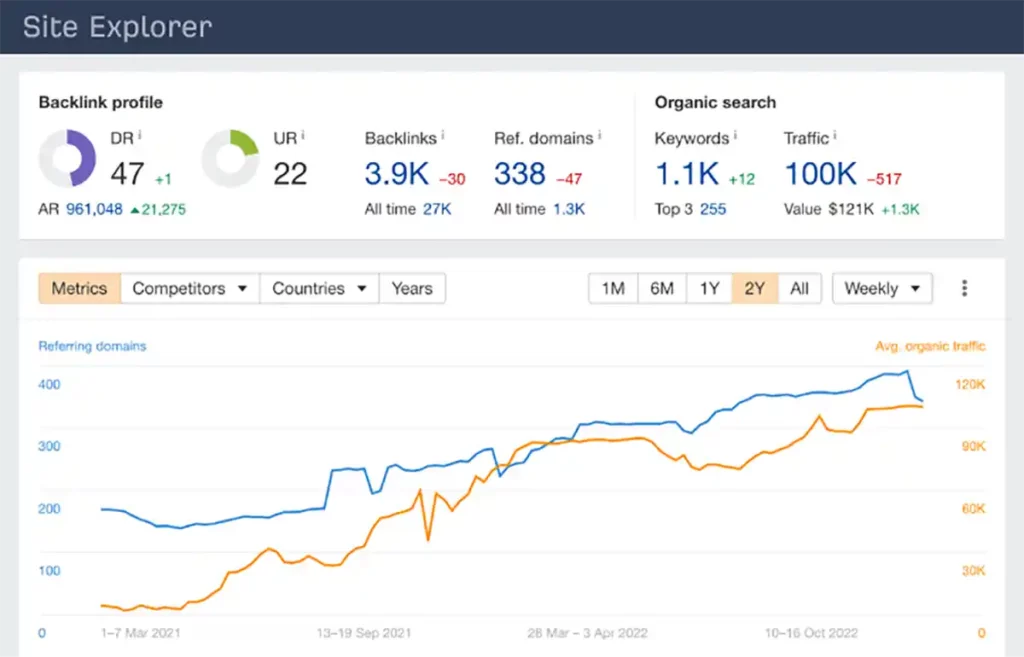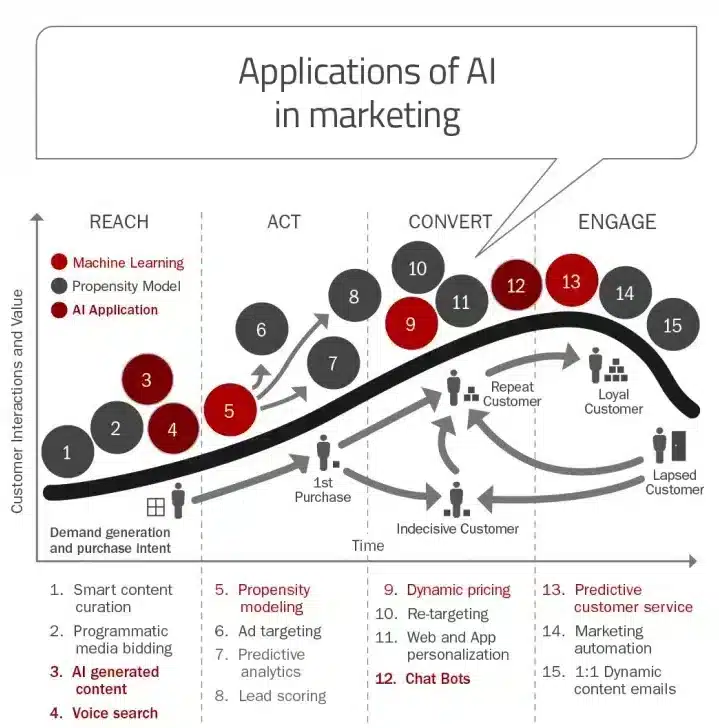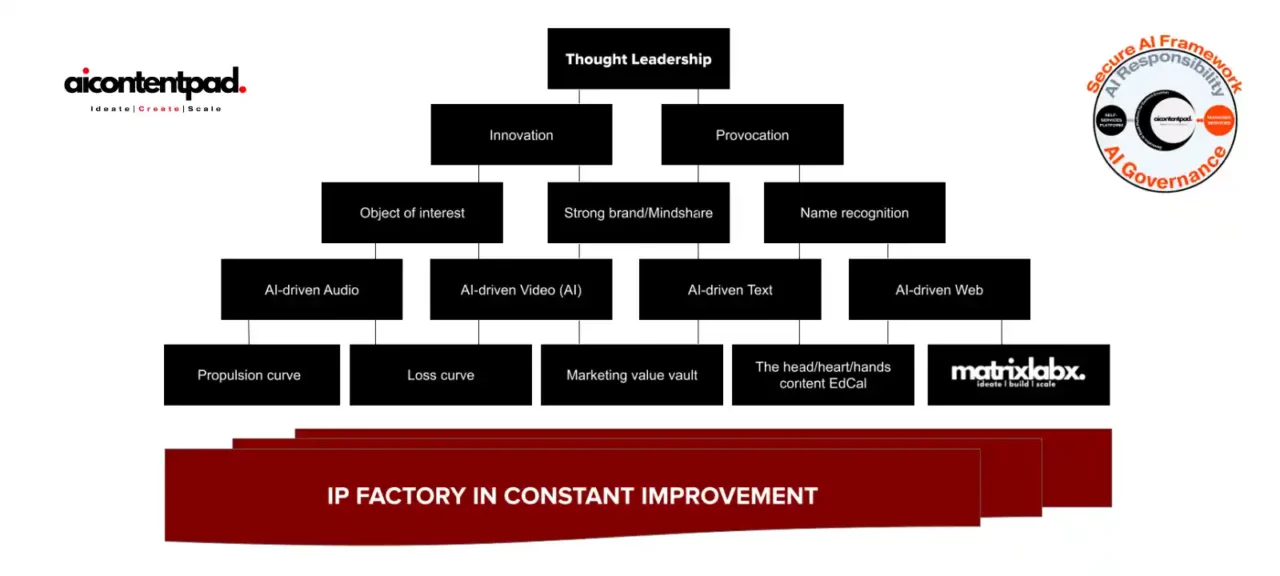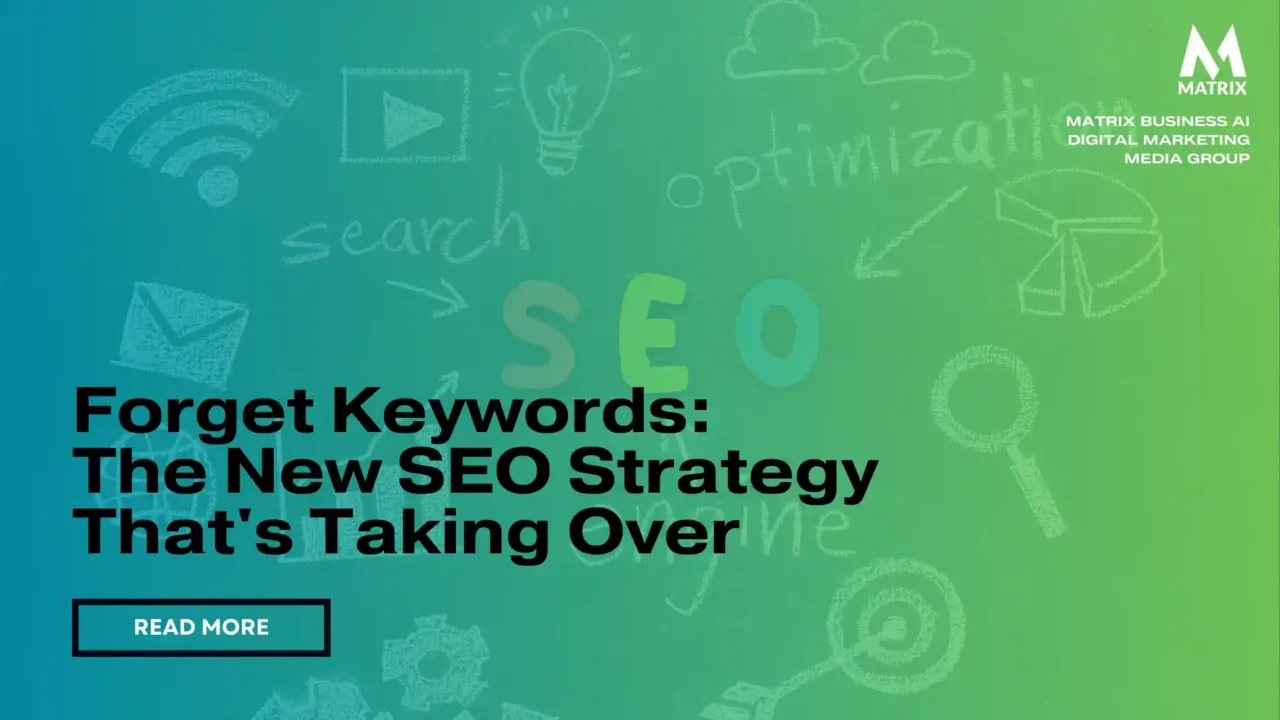Forget Keywords: The New SEO Strategy That’s Taking Over
Learn About The New SEO Strategy That’s Taking Over, Forget Keywords.
The traditional keyword-focused SEO strategy is no longer effective because search engines have become more sophisticated, and users are now searching more naturally.
In the past, people would search for specific keywords, but now, they are more likely to use long-tail keywords and phrases that more accurately reflect what they seek.
This means that businesses need to focus on creating content relevant to their target audience that meets their needs rather than simply stuffing their content with keywords. Top 7 Challenges Facing SEO Managers in 2025
Why the traditional keyword-focused SEO strategy is no longer effective:
- Search engines are now more sophisticated. Search engines like Google can now understand the meaning behind search queries and provide users with the most relevant results. This means businesses can no longer stuff their content with keywords to rank higher in search results.
- Users are now searching more naturally. As mentioned above, users are now more likely to use long-tail keywords and phrases when searching online. This is because long-tail keywords are more specific and better reflect what users seek.
- Content is now more important than ever. In the past, businesses could get away with creating low-quality content that was keyword-stuffed. However, this is no longer the case. Today, users are more likely to engage with content that is high-quality, informative, and relevant to their needs.
- Social media is now a major factor in SEO. Social media can be a powerful tool for driving website traffic and improving search engine rankings. However, it is important to use social media strategically and focus on creating engaging and shareable content.
The traditional keyword-focused SEO strategy is no longer effective.
The Shift in SEO Strategy: From Keywords to User Intent

In digital marketing, the landscape constantly evolves, and SEO strategies are no exception.
The traditional approach, centered around keyword optimization, has undergone a paradigm shift.
Today, artificial intelligence (AI)-driven SEO strategies dominate the marketing world, offering a more nuanced and effective way to navigate the complexities of search engine rankings.
The Demise of Keyword-Focused SEO:
The traditional keyword-focused SEO strategy relied heavily on stuffing content with relevant keywords to rank higher in search engine results pages (SERPs).
However, search engines have become increasingly sophisticated over the years, employing AI algorithms that decipher user intent and deliver more relevant results.
As a result, keyword stuffing no longer yields the desired outcomes, and businesses must adopt a more user-centric approach. The Rise of AI-Driven SEO:
AI-driven SEO strategies leverage the power of machine learning and natural language processing (NLP) to understand user intent and create content that resonates with their needs and queries.
AI algorithms analyze vast amounts of data, including search patterns, user behavior, and language patterns, to identify topics, keywords, and phrases relevant to a specific audience.
This data-driven approach allows businesses to create content that is both informative and engaging, ultimately improving their chances of ranking higher in SERPs.The Benefits of AI-Driven SEO. SEO Pricing Guide: How Much Does SEO Cost In 2025?
Your Blueprint for SEO Success in 2025
Whether you’re a business owner, marketer, or seasoned SEO professional, this guide is tailored to give you a competitive edge in the evolving digital landscape. Get SEO Pricing.
AI-driven SEO offers several key benefits that make it a compelling choice for businesses looking to stay ahead in the digital marketing game:
- Improved User Experience: By focusing on user intent, AI-driven SEO helps businesses create content that is relevant, informative, and engaging, leading to a better user experience.
- Higher Conversion Rates: Well-optimized content that addresses user needs increases the likelihood of conversions, as users are more likely to take desired actions such as making a purchase or signing up for a newsletter.
- Long-Term Sustainability: AI-driven SEO strategies are built on quality content and user engagement, making them less susceptible to algorithm updates and changes.
- Competitive Advantage: Businesses that adopt AI-driven SEO gain a competitive edge by staying ahead of the curve and leveraging the latest technological advancements.
The new SEO strategy is to focus on user intent.

The New SEO Strategy: Focusing on User Intent
The traditional keyword-focused SEO strategy is no longer as effective as it once was. Search engines have become more sophisticated, and users are now searching more naturally. This means that businesses need to focus on creating content relevant to their target audience and that meets their needs rather than simply stuffing their content with keywords.
What is user intent?
User intent is the reason why a user is searching for something online. It can be anything from finding information about a product or service to purchasing. When you understand user intent, you can create content more likely to meet their needs and rank higher in search results.
How to create content that meets user intent
When creating content, it is important to keep user intent in mind. Here are a few tips:
- Identify your target audience. Who are you writing for? What are their needs and interests?
- Research your keywords. What keywords are your target audience using? Use these keywords in your content, but don’t stuff them in.
- Write clear and concise content. Make sure your content is easy to read and understand.
- Use visuals. Images, videos, and infographics can help to break up your content and make it more engaging.
- Promote your content. Share your content on social media and other online channels.
The benefits of focusing on user intent

Focusing on user intent has several benefits, including:
Improved search engine rankings: When you create content relevant to user intent, you are more likely to rank higher in search results.
Increased traffic: Relevant content is more likely to attract visitors to your website.
Higher conversion rates: Visitors engaged with your content are more likely to convert into customers.
Improved brand reputation: Creating high-quality content that meets user intent can help to improve your brand reputation and build trust with your audience.
The new SEO strategy is to focus on user intent. By understanding what your target audience is looking for, you can create content that is more likely to meet their needs and rank higher in search results. This will increase traffic, higher conversion rates, and a better brand reputation.
User intent is the reason why a user is searching for something online. It can be anything from finding information about a product or service to purchasing. When you understand user intent, you can create content more likely to meet their needs and rank higher in search results.
Here’s a simple analogy to explain user intent:

Imagine you’re at a restaurant, and you want to order a burger. You could say, “I want a burger,” but the waiter might not know what kind of burger you want. If you say, “I want a juicy cheeseburger with fries,” the waiter will know exactly what you want.
The same is true for search engines. When you type in a query, the search engine tries to figure out what you want.
If your query is too vague, the search engine might not be able to provide you with the best results. But if your query is more specific, the search engine will be able to provide you with more relevant results.
Here are some examples of user intent:
- Informational: The user is looking for information about a topic. For example, “What is the capital of France?”
- Navigational: The user is looking for a specific website or webpage. For example, “Facebook login.”
- Transactional: The user wants to buy something or take another action. For example, “Buy a plane ticket to New York.”
Why is user intent important for SEO?
User intent is important for SEO because it helps you create relevant content to your target audience.
When you understand user intent, you can create content that is more likely to rank higher in search results and attract more visitors to your website.
How to determine user intent
There are a few ways to determine user intent. One way is to look at the keywords that users are searching for. Another way is to look at the context of the search.
For example, if a user is searching for “best burger in New York,” it’s clear that they are looking for a transactional result.
- Identify your target audience.
- Who are your ideal customers?
- What are their demographics, interests, and online behavior?
- Research your industry.
- What are the latest trends in your industry?
- What are the pain points of your target audience?
- Analyze your website traffic.
- What keywords are people using to find your website?
- What pages are they visiting most often?
- Use keyword research tools.
- Use tools like Google Keyword Planner and SEMrush to find relevant keywords and phrases.
- Pay attention to the search volume and competition for each keyword.
- Create buyer personas.
- Develop detailed profiles of your ideal customers.
- Please include information about their demographics, interests, and buying behavior.
- Analyze your competitors.
- What kind of content are your competitors creating?
- How are they targeting their audience?
- Develop your content strategy.
- Create a content calendar that outlines the topics you will cover and the keywords you will target.
- Ensure your content is relevant to your target audience and addresses their pain points.
- Create high-quality content.
- Write clear, concise, and informative content that is easy to read and understand.
- Use visuals like images, videos, and infographics to break up your content and make it more engaging.
- Promote your content.
- Share your content on social media and other online channels.
- Reach out to influencers in your industry and ask them to share your content.
- Track your results.
- Use analytics tools to track your website traffic, engagement, and conversions.
- Use this data to fine-tune your content strategy and improve your results.
How to create content that meets user intent
Once you know what user intent is, you can start creating content that meets their needs. Here are a few tips:
- Use relevant keywords. Make sure to use relevant keywords in your content, but don’t stuff them in.
- Write clear and concise content. Your content should be easy to read and understand.
- Use visuals. Images, videos, and infographics can help to break up your content and make it more engaging.
- Promote your content. Share your content on social media and other online channels.
Engaging Content for Texas Manufacturing Businesses: Meeting User Intent
Captivating Your Audience
In the digital world, creating compelling content that resonates with your target audience is crucial for the success of any business.
For a mid-sized manufacturing business in Texas, understanding user intent is the key to creating content that sparks curiosity and engages readers.
Here are a few tips to help you achieve this:
1. Identify Your Target Audience:
Begin by clearly defining your ideal customer. Understand their demographics, interests, pain points, and online behaviors.
This will lay the foundation for creating content directly addressing their needs and aspirations.
2. Research and Analyze:
Stay updated on the latest trends and challenges in the manufacturing industry in Texas. Analyze your website traffic and utilize keyword research tools to identify the search terms your audience is using.
This will provide valuable insights into their intent and help you tailor your content accordingly.
- Google Search Console (Free):
- Monitors website performance in search results and provides insights into organic traffic.
- Helps identify and fix technical issues that may impact rankings.
- Tracks backlinks and keyword performance.
- SEMrush (Paid):
- All-in-one SEO tool that provides a comprehensive suite of features.
- Includes keyword research, competitor analysis, backlink tracking, and rank tracking.
- Offers a variety of pricing plans to fit different budgets.
- Ahrefs (Paid):
- Another popular all-in-one SEO tool with a focus on backlink analysis.
- Provides detailed information about backlinks, including anchor text, referring domains, and link quality.
- Also includes keyword research, competitor analysis, and rank tracking.
- Moz Pro (Paid):
- Well-respected SEO tool that offers a variety of features.
- Includes keyword research, competitor analysis, on-page optimization suggestions, and link-building tools.
- Known for its user-friendly interface and helpful customer support.
- Majestic (Paid):
- Backlink analysis tool that provides a unique perspective on backlinks.
- Includes data on the quality and trustworthiness of backlinks.
- Useful for identifying high-quality backlinks and building relationships with influential websites.
To perform on-page SEO without an SEO tool, you’ll need to analyze your content and make optimizations manually.
Step-by-step guide to creating awesome content:

Creating captivating content that engages and resonates with your target audience is an art form in the digital era.
Here’s a step-by-step guide to help you craft compelling content that leaves a lasting impression and achieves your marketing objectives.
From understanding your audience’s intent to optimizing for search engines, this guide provides practical strategies and insights to create content that stands out, drives traffic, and converts visitors into loyal customers.
1. Keyword Research:
- Identify relevant keywords that your target audience is searching for.
- Use search engines and keyword research tools, or analyze your competitors’ websites to find suitable keywords.
2. Analyze Your Content:
- Review your existing content to identify areas for improvement.
- Look for opportunities to incorporate relevant keywords naturally into your content.
- Ensure your content is well-structured with clear headings, subheadings, and paragraphs.
3. Optimize Title Tags and Meta Descriptions:
- Write compelling and informative title tags and meta descriptions for each page.
- Include your target keywords in the title tags and meta descriptions.
- Keep title tags within 60 characters and meta descriptions around 160 characters.
4. Optimize Images:
- Use descriptive and keyword-rich filenames for images.
- Add alt text to images to provide context and improve accessibility.
- Compress images to reduce file size and improve loading speed.
5. Improve Internal Linking:
- Create a well-structured internal linking strategy to connect related pages on your website.
- Use relevant anchor text that includes your target keywords.
- Ensure that internal links are contextual and add value to the user experience.
6. Optimize Page Speed:
- Use tools like Google PageSpeed Insights or GTmetrix to analyze your page load speed.
- Implement caching, minify CSS and JavaScript files, optimize images, and reduce redirects to improve page speed.
7. Monitor and Iterate:
- Regularly monitor your website’s performance using analytics tools like Google Analytics.
- Track key metrics such as organic traffic, bounce rate, and time on the page.
- Continuously review and iterate on your on-page SEO efforts based on the data you collect.
Craft captivating headlines that immediately grab attention.
Use action-oriented language, evoke curiosity, and highlight benefits to entice readers to explore your content further.
Importance of Compelling Headlines

Attention-Grabbing:
Headlines are often the first impression potential customers have of your business. A compelling headline can immediately capture their attention and encourage them to learn more.
Increased Visibility:
Compelling headlines can make your marketing copy and company materials stand out, increasing the chances of your content being noticed and read.
Improved Click-Through Rates:
In digital marketing, compelling headlines can lead to higher click-through rates, entice readers to click on your content and visit your website. The average click-through rate for an e-commerce site is about 2 to 3%, but what if you could get it up to 10 to 12% with better headlines?
Ditch the Pixel Dungeon: Forge Your Perfect Headless Website
Forget clunky templates and pixelated walls. Build a website that dances with AI that breathes personalization, and leaves your visitors screaming (in a good way). Headless development unleashes endless possibilities. Join us and craft your digital masterpiece. Dare to break the internet? Contact us today!

Brand Recognition:
Consistent use of compelling headlines can help establish your brand’s identity and make it more recognizable in the marketplace.
Credibility and Trust:
Well-crafted headlines can convey a sense of professionalism and credibility, building trust with potential customers and increasing the likelihood of conversions.
Emotional Connection:
Compelling headlines can evoke emotions, connecting readers and making them more likely to engage with your content.
SEO Impact:
Search engines often use headlines to determine the relevance of content to search queries. Compelling headlines can improve your search engine rankings, increasing organic traffic.
Social Media Engagement:
Compelling headlines are more likely to be shared on social media, extending the reach of your marketing efforts and increasing brand awareness.
Measurable Results:
The effectiveness of compelling headlines can be tracked and measured through metrics such as click-through rates, conversions, and social media engagement.
By following these tips, you can create content that meets user intent and improves your SEO.
- Understand your audience. What are their needs, wants, and interests? What kind of language do they use? What kind of headlines are they likely to find compelling?
- Do your research. What are other bloggers and websites writing about in your niche? What kind of headlines are they using? What seems to be working well?
- Brainstorm a list of potential headlines. Don’t be afraid to get creative. The more headlines you create, the better your chances of finding a great one.
- Narrow down your list. Once you have a list of potential headlines, take some time to narrow it down to the best few. Consider the following factors:
- Is the headline relevant to your target audience?
- Is it clear and concise?
- Is it attention-grabbing?
- Does it make the reader want to learn more?
- Test your headlines. Once you have a few final headlines, test them to see which performs best. You can do this by running a split test on your blog or asking friends and colleagues for feedback.
Drive Better Results with a Complimentary Marketing Audit
Take the guesswork out of your marketing strategy. Our Free Marketing Audit is designed to analyze your current efforts, identify gaps, and uncover growth opportunities. Whether you’re struggling with low ROI, limited engagement, or unclear targeting, we’ll provide actionable insights to help you achieve your business goals.
Conclusion
The new SEO strategy is the future of SEO
The new SEO strategy is a revolutionary approach to search engine optimization that prioritizes the user experience and aligns with the latest search engine algorithms.
By creating high-quality, relevant content that meets the user’s intent, the new SEO strategy ensures that websites rank higher in search results and attract more organic traffic.
Here are some key benefits of the new SEO strategy for users:
- Improved search results: The new SEO strategy helps users find more relevant and informative search results, saving them time and effort.
- Better user experience: Websites that follow the new SEO strategy are more user-friendly and engaging, providing a better overall experience for visitors.
- More accurate information: The new SEO strategy emphasizes the importance of providing accurate and trustworthy information, ensuring that users can make informed decisions based on the content they find online.
- Increased transparency: The new SEO strategy is more transparent, with search engines providing more information about how websites are ranked. This helps users understand why certain websites appear higher in search results and make more informed decisions about which websites to visit.
Overall, the new SEO strategy is a positive development for users, providing them with a better search experience, more relevant results, and more accurate information.
The benefits of the new SEO strategy
The new SEO strategy offers several significant benefits that can enhance your website’s visibility, organic traffic, and overall performance:
Increased Organic Traffic:
By optimizing your website for relevant keywords, search engines will be more likely to display your site in search results, increasing organic traffic.
Improved Brand Visibility:
A higher ranking in search engine results pages (SERPs) increases your website’s visibility, making it more likely for potential customers to find and engage with your brand.
Enhanced User Experience:
The new SEO strategy focuses on creating a better user experience by optimizing website speed, improving navigation, and providing high-quality, relevant content. This can lead to increased engagement and longer on-page sessions.
Competitive Advantage:
By staying ahead of the competition in terms of SEO, you can gain a competitive advantage and capture a larger market share.
Cost-Effectiveness:
SEO is a cost-effective way to attract qualified traffic to your website. Unlike paid advertising, SEO provides long-term benefits without needing ongoing investment.
Increased Credibility and Trust:
A well-optimized website with high-quality AI generated content can establish your brand as a credible and trustworthy source of information, boosting customer confidence and loyalty.
Scalability:
The new SEO strategy is designed to be scalable, allowing you to continue growing your organic traffic as your business expands.
The New SEO Strategy: Scalability for Growing Businesses
The new SEO strategy is designed to be scalable, allowing businesses to grow their organic traffic as they expand. Here’s how it works:
1. Focus on Quality Content
The foundation of the new SEO strategy is creating high-quality, relevant content that meets the user’s intent.
This means understanding your audience, researching their needs, and providing valuable information that answers their questions.
2. Prioritize User Experience
The user experience is a critical factor in the new SEO strategy. Websites must be easy to navigate, load quickly, and provide a positive overall experience. This includes optimizing for mobile devices and ensuring your content is accessible to all users.
3. Embrace Automation
The new SEO strategy embraces automation to streamline tasks and improve efficiency.
This includes using tools for keyword research, content optimization, and social media marketing. Automation can free up your time to focus on more strategic initiatives.
4. Monitor and Adapt
The new SEO strategy is an ongoing process that requires constant monitoring and adaptation. You must track your progress, analyze your results, and adjust as needed.
This will ensure that your SEO strategy remains effective and continues to deliver results.



